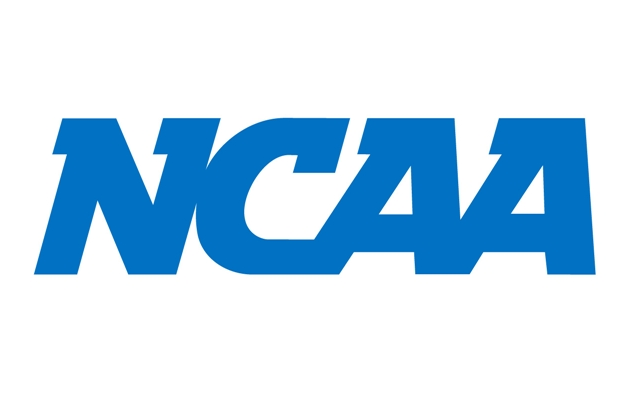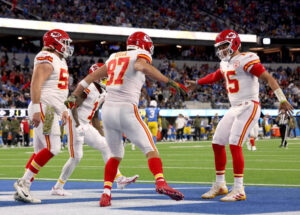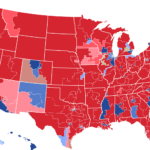March Madness is now well in the rear view mirror. Next up: College football. But the debate among fans, athletes, parents, and even politicians is over the compensation given to the athletes. In this article, the question is asked: why not pay the college athletes?
Background for context
The National Collegiate Athletic Association (NCAA) as a body was formed in 1906. NCAA claims to be a non-profit organization. This organization consists of over one thousand schools, institutions, divisions, and bodies. With almost half million athletes under its umbrella, the NCAA has expanded even to Canada as in 2009 Simon Fraser University became the first non-US school to join the affiliation. Broken into three divisions, the NCAA has been a very successful business entity. A cartel if you will.
The NCAA has proven to be a cash cow
The NCAA had total revenue of nearly $1 billion during its 2014 fiscal year, resulting in a surplus of more than $80 million. Not bad, considering the NCAA is a non-profit organization by definition. In the previous year, the NCAA posted a surplus of $60 million as were the previous two years. So for those keeping scores that’s a total surplus of over $250 million. Wow.
The flag bearers for the NCAA revenue earning are College Football and the NCAA Basketball Tournament, aptly nicknamed March Madness. Bringing in 80-90%, March Madness continues to increase in value. But even with all of the monies made by the NCAA, they have held steadfast to the principle of not paying the athletes.
NCAA and its relationship with sponsors
In the documentary “Sole-man,” sneakers impresario Sonny Vaccaro said, “I wanted to pay the players, they (the NCAA) won’t allow it. So I paid the coaches.” This statement by Vaccaro showcased the fact that the college players were simply pawns in a much larger universe. So consider this, major sneak brands like Nike, Adidas, Reebok, and Under Armour pay schools, institutions, and the NCAA to advertise their products. However, in this instance, the models go unpaid. The persons who wear the products are ineligible to collect compensation for assisting these conglomerates wealth drive.
As proof of the institutions manipulating and or maneuvering potential big money moves, one need to look no further than the Indiana University Men’s Basketball coaching search. Speculation was rife that current UCLA Head Coach Steve Alford was strongly considered for the job. The issue came with Alford’s UCLA contract. It required a $7.8 million buyout. Indy Star reporter Gregg Doyel wrote the following in his column.
The Alford-to-IU noise is so loud, coaches around the country are telling me what they’re hearing: They expect Adidas — IU has a $54 million contract with Adidas through 2024 — to pay Alford’s $7.8 million buyout at UCLA. It too was an Adidas school when UCLA hired Alford in 2013, but the Bruins recently left Adidas for a 15-year, $280 million deal with Under Armour. Adidas would love to return the favor and help Alford leave UCLA. That’s what other coaches are hearing, and telling me.
Of course the Indiana Hoosiers went in another direction, choosing Archie Miller formerly of Dayton as its new head coach.
The new lockers for University of Texas football players
Raising the bar. #ThisIsTexas #HookEm pic.twitter.com/GniFz30wCH
— Texas Football (@TexasFootball) April 14, 2017
The University of Texas recently announced they will be installing new lockers for its football team. Not the most newsworthy, except each locker will cost $10,500 to build. Yes, that’s correct, more than $10,000. Yet it remains a problem to pay the players, who make it possible for Texas to accumulate such revenue. If one can explain how these lockers enhance the lives of these financially challenged athletes, please do not hesitate to speak up. But most noteworthy, these lockers are only a facet of the total renovation of the entire University of Texas football locker room.
A glimpse into the fUTure locker room renovations. #ThisIsTexas #HookEm https://t.co/ncefb2KgLA
— Texas Football (@TexasFootball) April 17, 2017
One may get defensive and cite Texas as just one school. Yes that’s true, except University of Oregon underwent a similar makeover a few seasons ago. The University of Alabama followed suit. On the face of it, these may appear as one-off examples. The three schools mentioned are state run. So though funded by private boosters and businesses, these schools remain under the purview of state legislation and get state funding. This becomes relevant when one considers, an excuse often used for not paying the “Student Athletes” is the school simply doesn’t have the funds. Whatever happened to the old proverb, “Eat little and live long”? It became engulfed by “Texas, A whole lot of Country.”
University of Texas president Gregory L. Fenves recently said, “students go to games to watch their fellow students compete, and that they would not be as interested in attending if the players were professional”. Mr. Fenves’ logic is, students play sports to make their schools rich. Oh and be allowed to have state of the art lockers. What a shame. Better still, what a sham.
The coaches’ salaries are higher than ever
As you delve deeper into the issue of financial dispersal in collegiate sports, one cannot help but notice the coaches’ salaries. In recent years, news of coaches salaries continuously amazed the public at large. Nick Saban is the University of Alabama Football team head coach. For the 2016 season, Saban received an eye-popping $6.9 million. That number was second on the list of highest paid college coaches for that period. Jim Harbaugh, coach at Michigan University made a little over $2 million more than Saban. Compare those figures to their NFL contemporaries and notice they match up identically. Bill Belichick of the NFL’s New England Patriots makes less than Jim Harbaugh. That’s strange as the NFL is a for-profit enterprise, a professional league, both of which the NCAA states they are not. The hypocrisy continues.
In related news, last June University of Alabama announced the salary increase of Strength and Conditioning coach Scott Cochran up to $525,000 annually. Why? As a thank you for not leaving to join the University of Georgia, who was openly recruiting his services.
Not paying the collegiate athletes is un-American
Think of it for a moment, you do a job, it’s only reasonable to expect some sort of reward. The original fallback of the reward of the student-athlete is that the school is paying for their room and board. That is at best, misguided and misinformed. A student on a music scholarship, if offered an opportunity to play in Sting‘s band for a concert series, they will be properly compensated. Why have the student athlete be subjected to such archaic rules? The reasons are thick and fast. “You can’t have the young men and women having too much cash this soon.”
NCAA President spoke on the matter
President of the NCAA Dr. Mark Emmert is an outspoken advocate for keeping the status quo. Testifying in an anti-trust case in 2014 Dr. Emmert said the following; “To convert college sports into professional sports would be tantamount to converting it into minor league sports,” Emmert said. “And we know that in the U.S., minor league sports aren’t very successful either for fan support or for the fan experience.”
Obviously, Dr. Emmert is in an ivory tower. Either that, or he is keeping up the charade for the masses. The NCAA College football is the de facto minor league for the NFL. There is no other viable alternative for a person wishing to play in the NFL than to play college football. Though there are an increasing number of European and Asian imports to the NBA, the NCAA is pretty much a necessary stepping stone for basketball players. The fledgling G-League or NBDL may change that in years to come. Baseball, however, is different. There is a solid minor league structure and system in place for Major League Baseball. As a result, the NCAA does not receive nearly the amount of revenue from college baseball compared to football and basketball.
Conclusion
This is nothing more than an elaborate ruse, a shell game, or a con. The NCAA wants the public to believe that in order to keep college sport viable, the players must be unpaid. In some cultures, that can be mistaken for slavery or a caste system. The NCAA cannot say, they’re not making a profit. Schools are lining up to pay coaches with mediocre records millions to come work for their institutions.
Here’s a question, if the players cannot receive a salary, why not cap the amount of money the coaches can make? Are Nick Saban, Jim Harbaugh, Urban Meyer, Bob Stoops, and Jimbo Fisher worth each above $5 million annually? Explain that to the player whose mother’s electricity is disconnected (due to arrears). Or the professional snowboarder, turned wide-receiver forced to forfeit sponsorship money (from snowboarding) because it violated NCAA rules. What an arcane system. Hopefully it changes before long.
Main Photo:














103 Responses
All valid points….but no one….no one…has come up with a viable system for payment that does not tilt the recruiting balance to certain schools or does not violate Title IX or does not create inequity within a team. Once they do, I am in.